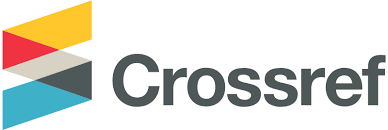PROFIL FITOKIMIA DAN UJI AKTIVITAS ANTIFUNGI EKSTRAK METANOL DAUN LABAN (Vitex pinnata L.) SERTA FRAKSI-FRAKSINYA
Abstract
Penelitian ini bertujuan untuk mendapatkan data profil fitokimia dan data bioktivitas antifungi ekstrak MeOH, fraksi n-heksana, fraksi CHCl3 dan fraksi EtOAc daun laban (Vitex pinnata L.) asal pantai Pangandaran terhadap fungi Candida albicans dan Trichophyton mentagrophytes. Ekstraksi daun laban dilakukan dengan metode maserasi dan partisi bertingkat. Uji fitokimia dilakukan melalui uji profil fitokimia dan pengamatan KLT terhadap ekstrak MeOH, fraksi n-heksana, fraksi CHCl3, fraksi EtOAc. Dari hasil uji fitokimia dan identifikasi golongan senyawa dengan KLT diperoleh informasi bahwa ekstrak MeOH daun laban mengandung metabolit sekunder golongan flavonoid, fenolik, steroid dan terpenoid. Fraksi n-heksana mengandung metabolit sekunder golongan steroid. Fraksi CHCl3 mengandung metabolit sekunder golongan flavonoid, fenolik dan steroid. Sedangkan fraksi EtOAc mengandung metabolit sekunder golongan fenolik dan terpenoid. Uji aktivitas antifungi dilakukan dengan metode difusi dan dilusi agar. Hasil uji aktivitas antifungi menunjukkan nilai DDH dan KHM terbaik dimiliki oleh fraksi EtOAc dengan nilai DDH rata-rata mencapai 15,5 mm pada konsentrasi 50% dan nilai KHM sebesar 3,1% terhadap Trichophyton mentagrophytes. Diduga metabolit sekunder golongan terpenoid berperan penting dalam aktivitas antifungi pada ekstrak EtOAc terhadap Trichophyton mentagrophytes.
Kata kunci: Vitex pinnata L., fitokimia, Kromatografi Lapis Tipis, antifungi, Candida albicans, Trichophyton mentagrophytes, Diameter Daerah Hambat, Konsentrasi Hambat Minimum.
The objective of this research are to obtain phytochemical profile data and antifungal bioactivity data from MeOH extract, n-hexane fraction, CHCl3 fraction and EtOAc fraction of Laban leaves (Vitex pinnata L.) from Pangandaran beach to against Trichophyton mentagrophytes and Candida albicans. Laban leaves extraction is done by maceration method and multilevel partitioning. Phytochemical test is done through testing and screening of phytochemistry profile by TLC to the MeOH extract, n-hexane fraction, CHCl3 fraction and EtOAc fraction. The results and identification of phytochemical classes compounds with TLC obtained information that the MeOH extract of laban leaves containing secondary metabolites such as flavonoids, phenolics, steroids and terpenoids. N-hexane fraction containing secondary metabolites steroids. CHCl3 fractions containing secondary metabolites such as flavonoids, phenolics and steroids. EtOAc fraction containing secondary metabolites such as phenolics and terpenoids. Antifungal activity test was taken by diffusion and dilution methods. Antifungal activity test results showed the best MIC and DDH value owned by EtOAc fraction with DDH values averaged 15.5 mm at a concentration of 50% and the MIC values of 3.1% against Trichophyton mentagrophytes. Classes of terpenoid secondary metabolites was expected have a role to antifungal activity against Trichophyton mentagrophytes in EtOAc extract.
Key words: Vitex pinnata L., phytochemical, Thin Layer Chromatography, antifungal, Candida albicans, Trichophyton mentagrophytes, Diameter Inhibitory Region, Minimum Inhibitory Concentration.







